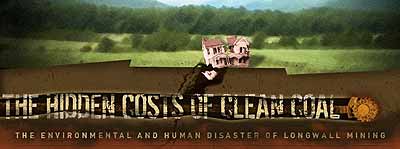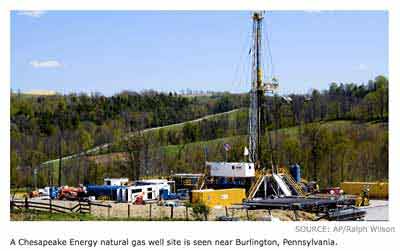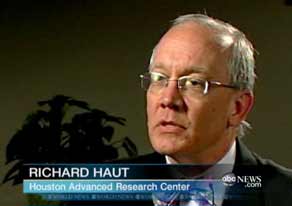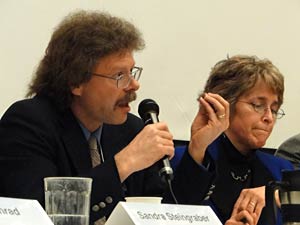Contains the keyword experts
In the 1970s, Congress passed a host of environmental laws that sought to adopt a preventive approach to reducing disease and protecting health and environment. Since then, average body burdens of some persistent toxic materials such as lead and cadmium have fallen, but those of other newer materials, like persistent flame retardants, have risen.
The major obstacle to a protective chemicals management system remains the culture of trade secrecy that allows firms to withhold information about potential health and safety dangers of their products. In my book, The Secret History of the War on Cancer, and in recent testimony to the President’s Cancer Panel on cancer prevention, I have advanced the concept of a Truth and Reconciliation Commission on Toxic Hazards.
The current regulatory system has failed to protect workers, their families and communities. Under the present adversarial system, companies can legally withhold information on the dangers of workplace hazards under the rubric of trade secrets, and they can also legally conceal information on health hazards as part of sealed settlement agreements...
Author's note: This essay is in response to: What is the key obstacle to implementing an effective, health-protective, chemicals management system?
See: Sandra Steingraber. Living Downstream: An Ecologist's Personal Investigation of Cancer and the Environment
See: Marcellus-Shale.us. "Our Look at the The Halliburton Loophole":
This exemption (from the Clean Water Act - authorized by the Energy Policy Act of 2005) allows non-disclosure of the toxic ingredients used near wells and aquifiers in drilling and waste injection. The rush to exploit the Marcellus Shale (referred to by BP's Tony Heyward as a "game-changer") allows gas drillers to legally keep secret the contents of the fracturing fluids used in fracking. Endocrinologist Dr. Adam Law of Ithaca, New York recently testified at the EPA Hearings in Binghamton that doctors cannot treat patients for exposure to chemicals if they don't know what they were exposed to. TEDX, The Endocrine Disruption Exchange, directed by Dr. Theo Colborn in Colorado continues to investigate the relationship between health and environmental distress.
See: Poisoned profits : the toxic assault on our children
See: Tox Town
See: The National Children's Study (2010)
The National Children’s Study will examine the effects of the environment, as broadly defined to include factors such as air, water, diet, sound, family dynamics, community and cultural influences, and genetics on the growth, development, and health of children across the United States, following them from before birth until age 21 years. The goal of the Study is to improve the health and well-being of children and contribute to understanding the role various factors have on health and disease. Findings from the Study will be made available as the research progresses, making potential benefits known to the public as soon as possible.
See:Fracking: Implications for Human and Environmental Health
The Center for Public Integrity’s year-long investigation into the social and environmental impacts of longwall mining centered on hundreds of pages of documents obtained from government sources, such as the Pennsylvania Department of Environmental Protection and the U.S. Fish and Wildlife Service; legal agreements between coal companies and property owners; environmental studies; landowner letters; and federal and state records requests.
The library features key documents exemplifying key people or issues in each of the project’s magazine articles.
See: Resources Page:
This list of resources includes the websites of coal companies and citizens groups, as well as studies about and lawsuits over the impacts of longwall mining.
Tox Town Fact Sheet
Tox Town is designed to give you information on everyday locations where you might find toxic chemicals; non-technical descriptions of chemicals; links to selected, authoritative chemical information on the Internet; how the environment can impact human health and Internet resources on environmental health topics.
Tox Town uses color, graphics, sounds and animation to add interest to learning about connections between chemicals, the environment, and the public's health. Tox Town's target audience is students above elementary-school level, educators, and the general public. It is a companion to the extensive information in the TOXNET collection of databases that are typically used by toxicologists and health professionals.
You can explore Tox Town by selecting Neighborhoods, Location links or Chemical links.
I went to this page, For Teachers - Classroom Activities and Discussion Questions [at the High School and College level], and browsed Haz-Map by Processes and Adverse Effects for Mining and found 65 results linking to articles ranging from Hydrogen Sulfide to Diesel Exhaust and Cyanides.
See: What is the National Children's Study?
See: Household Products Database
See: Poisoned profits : the toxic assault on our children
See: Crude Oil Is Added to the Chemical Page
See: EPA | Office of Children's Health Protection
Top Three Questions
Where can I learn the facts about children's environmental health?
What can I do to protect children from environmental health risks?
Where can I find publications about children's environmental health?
Walter Hang's letter to NYS DEC Commissioner Grannis regarding 270 pollution releases. For a critique (12/18/2009) of Mr. Hang's claims, see the Oil and Gas Industry-funded Energy In Depth website's article. See also the Sourcewatch web page critiquing Energy in Depth.
"...I write today because I do not believe your response refutes the fact that the 270 uncontrolled pollution releases document serious regulatory shortcomings. I also will dispute your belief that gas and oil problems are “promptly and effectively addressed."
All of the 270 oil and gas releases I identified in November were documented in DEC’s hazardous materials spills database.
I subsequently learned the spills database does not include natural gas problems reported to health authorities in the three counties with the highest number of oil and gas wells in New York State. I also learned DEC’s Division of Mineral Resources does not report all oil and gas releases to the Division of Spills.
I write today to document dozens of additional natural gas concerns that have neither been fully investigated nor remediated. These incidents reinforce grave concerns about the adequacy of DEC’s gas drilling regulations and provide further documentation that the draft SGEIS is inadequate and must be withdrawn."...
Very truly yours,
Walter Hang
215 North Cayuga Street
Ithaca, NY 14850
Cc: Honorable Judith Enck, US EPA Region 2 Administrator
Honorable Michael Bloomberg, Mayor, City of New York
Honorable Barbara Lifton, Representative, 125th Assembly District
Honorable William Parment, Representative, 150th Assembly District
Honorable James Gennaro, City Council Member, District 24
Democracy Now Video. Interview with Dr. Theo Colborn. April 14, 2010.
"The Environmental Protection Agency has begun a review of how the drilling process known as hydraulic fracturing, or “fracking,” can affect drinking water quality.
We speak to Dr. Theo Colborn, the president of the Endocrine Disruption Exchange and one of the foremost experts on the health and environmental effects of the toxic chemicals used in fracking." [includes rush transcript]
Expert reports and selections of news accounts and analysis of the breaking news concerning the meltdown of Japan's nuclear reactors ongoing since March 13, 2011.
To respond to questions we’ve been getting, we’re developing a set of responses to “frequently asked questions.” The FAQ is located here: "Nuclear Reactor Crisis in Japan FAQs", and we will continue adding to it through the week.
Follow Google News on 'meltdown'.
Contact All Things Nuclear.
A project of the Union of Concerned Scientists.
Download this brief (pdf)
A widely used oil-and-gas drilling technique, hydraulic fracturing, is spreading rapidly to develop vast reserves of natural gas trapped in deep underground shale formations.
Hydraulic fracking, however, is coming under more rigorous oversight by the press and state and federal agencies because of its contribution to air and water pollution.
This attention is welcome, both to ensure that health and safety will be protected if gas is to be more widely used as a cleaner replacement for coal in electric plants and foreign oil as a transportation fuel. We must also more accurately measure carbon dioxide and other pollution from the combustion of gas compared to coal and oil.
This issue brief explores the ecological and economic issues of “fracking,” as it is increasingly coming to be known in the areas of the country where natural gas is tapped due to the technology. Cutting to the chase, our conclusion is this—hydraulic fracturing needs to be done carefully and be well-monitored, with particular attention paid to the full scope of carbon dioxide released into our atmosphere to gauge accurately the consequences of global warming due to the expanded use of natural gas.
...Concerns about this technique led late last year to a partial moratorium in New York state on new drilling permits that allow fracking. Nationally, advocates want to repeal a 2005 congressional exemption of fracking from oversight under the Safe Drinking Water Act. Many activists also want to require drilling companies to publicly disclose the chemicals it uses, as other industries do under the Community Right to Know law. Industry historically resists such calls, though a number of companies have recently dropped their opposition, saying they will publicize the chemicals they use.
These natural gas operations also produce smog-forming pollutants, contributing to air pollution problems in places such as western Wyoming and the Fort Worth area. Indeed, natural gas wells produce so much air pollution that smog in the area around Pinedale, Wyoming is sometimes as bad as in Los Angeles. And these shale gas wells can release fugitive methane, which is a potent global warming pollutant.
In a recent investigation, for example, The New York Times reported on rivers and waterways that serve public water systems in Pennsylvania being contaminated with naturally occurring radioactive materials, such as radium, as a result of drilling activities. The series has also raised serious questions about the adequacy of oversight by state and federal agencies including the Environmental Protection Agency.
Tom Kenworthy is a Senior Fellow at the Center for American Progress who focuses on energy and environmental issues. Daniel J. Weiss is a Senior Fellow and Director of Climate Strategy at the Center. Lisbeth Kaufman is a Special Assistant with the Center’s Energy team, and Christina C. DiPasquale is Associate Director of Press Relations at the Center.
Economic Implications of Marcellus Shale Natural Gas Development: Potential Impacts on Tourism, Agriculture, and Housing
A webinar hosted by Cornell University's Community and Regional Development Institute (CaRDI) on May 9, 2011 presented the work of a graduate student project in the Dept. of City and Regional Planning guided by Professor Susan Christopherson. Presenters: Vera Bartolome Diaz, Tom Knipe, Christopher Smith, Greg Waldman, Ethan Warsh, David West and Austin Zwick. (PDF version of the Powerpoint).

See: Christopherson to study economic impact of gas drilling in Marcellus Shale

Photo by Neil Zusman
Christopherson states that after fracking, there is no other industry. That will be all there is economically for the next ten to twenty years. Forget about agriculture, tourism, wine, tourism, and anything else besides energy. After a decade or two, or more, things might return to normal...
See: Catskill Citizens | More Damning Evidence About Fracking
"Our quality of life has an unquenchable thirst for energy. Offshore drilling and production helps to satisfy this thirst." --Richard Haut
Extracting energy requires trade-offs. “We want clean air, but we also like the convenience of electricity,” said Richard Haut during a lunch-hour seminar last Tuesday. Haut, founder and senior research scientist at Houston Advanced Research Center (HARC), visited Cornell to promote what he calls “environ- mentally friendly drilling systems.”
But his talk left many people hungry for answers...
Haut embraces the idea that drilling is coming and the only question is how to minimize the damage. Take hydraulic fracturing: about 50 percent of all wells drilled into shale, tight gas and coal-bed methane formations use fracking. Within 25 years, he said, 75 percent of all gas wells will be fracked.
“But the typical frack site is an accident waiting to happen,” Haut said, pointing out potential spills, pit leaks and heavy truck traffic. Another issue is dealing with flow- back and produced waste fluids. Haut showed examples of mobile treatment units but never described the technology under development...
The problem with Haut’s environmentally friendly drilling approach, says Cornell engineering professor Tony Ingraffea, is that it reflects the worldview that shale gas development is inevitable, so we just have to “do it right.” This precludes true scientific investigation of many issues that this development presents, he said, noting that instead it focused on technology, such as how to build a well less likely to leak. “Such a view is also an admission that the thousands of shale gas wells already made, and those underway now, are not ‘being done right’,” Ingraffea said.
Physicist Bill Podulka agrees.
“The wide array of acknowledged problems and lack of currently available solutions underscores what many gas drilling critics have been saying: this technology is not ready.” What was missing, Podulka says, is discussion about excluding drilling from areas too socially or environmentally fragile. Instead, he said, the context boiled down to “how do we allow business as usual while bringing environmental damage down to a level we can tolerate?”
See: Gasland - The Debate

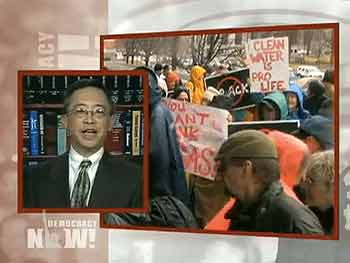
Efforts by lawmakers and regulators to force the federal government to better police the natural gas drilling process known as hydraulic fracturing, or "fracking," have been thwarted for the past 25 years, according to an exposé in the New York Times.
Studies by scientists at the U.S. Environmental Protection Agency on fracking have been repeatedly narrowed in scope by superiors, and important findings have been removed under pressure from the industry.
The news comes as the EPA is conducting a broad study of the risks of natural gas drilling with preliminary results scheduled to be delivered next year.
Joining us is Walter Hang, president of Toxics Targeting, a firm that tracks environmental spills and releases across the country, based in Ithaca, New York, where fracking is currently taking place. [includes rush transcript]






